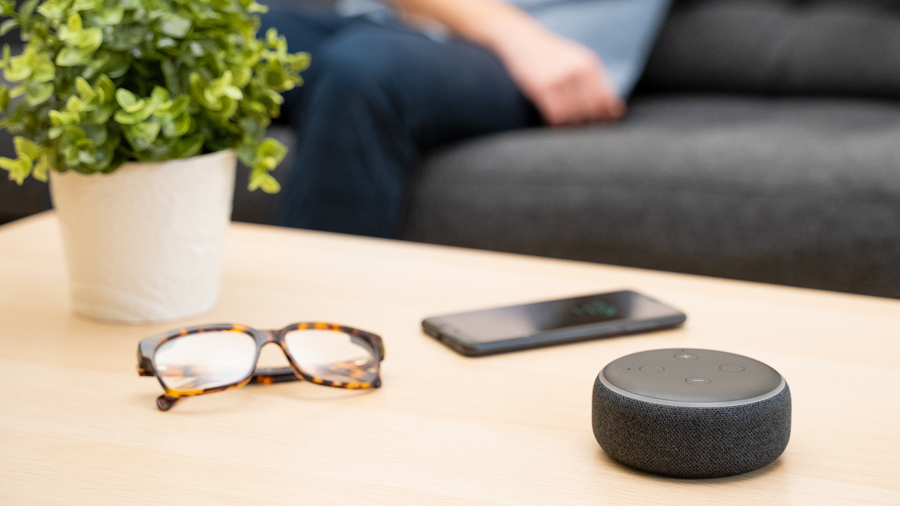How do you protect your data and meet regulatory compliance guidelines with a limited IT staff? This ebook discusses six measures skilled nursing facilities can take to follow best practices for security and business continuity.
Tag: LTPAC
Step-by-Step EHR Migration Checklist for Senior Care Facilities
Ownership changes are a fact of life in senior care. When a nursing home or LTPAC facility changes hands, you’re often faced with the challenge of migrating the electronic health record (EHR) system to a new platform — without sacrificing or impacting continuity of care. At FIT Solutions, we’ve supported many of these migrations. Over time, we’ve developed a roadmap and set of best practices for efficiently and successfully completing the handover to new ownership.
EHR Migration Roadmap: Planning Ahead
Preparation is key. In our experience, the more attention you pay to the first four steps here, the less likely you are to encounter unplanned obstacles downstream that could substantially delay your migration.
- Determine the migration type. We anticipate that as the new owner, you’ll be using an EHR system hosted in the cloud. There are so many advantages to a cloud-based system that hardly anyone hosts their instance on-premises in their own data center anymore. Here are the possible scenarios.
- EHR to same EHR. If the outgoing and incoming owners use the same EHR system, the migration can be as simple as spinning up a new instance of the software in the cloud and copying the database over. Not all of the steps in this checklist will apply to you, but most assuredly, some of them will.
- Paper records to EHR. In some ways, moving from paper records is more straightforward than migrating across different EHRs. You’ll need to do some scanning and have the resources to do that available to you.
- EHR to different EHR. The majority of the time, this is the scenario you’ll be dealing with.
- Obtain and inspect the final letter of agreement. We can’t emphasize this enough. You need to have the sale confirmed and letter of agreement finalized several months before the migration. The letter of agreement spells out whether the pre-existing computing, network and telephony equipment comes along with the sale. It also spells out which EHR records you’ll be allowed to copy. Policies vary from seller to seller — sometimes widely. The letter of agreement dictates what information you can migrate, and how. You can’t presume anything.
- Assess the willingness of the outgoing owners to cooperate. Regardless of what’s in the letter of agreement, reach out and get an idea of the outgoing owner’s willingness to share information, grant access and respond to your inquiries. The entire process will go much smoother with a cooperative seller. Some limit access and support. Enlightened sellers understand that transferring ownership supports their overall strategy, and is just part of doing business.
- Conduct a coordinated site survey. If you can, go onsite well in advance and do a thorough walk-through and site survey. Ideally, the IT team as well as electrical and other contractors will all go at the same time to work through and plan any potential changes. Typically, there is some IT work that’s dependent on the electrical work. This includes the need to relocate electrical outlets and network drops, or add new ones to accommodate new kiosks, Wi-Fi access points or other equipment. If backup power isn’t in place, this is the right time to rectify that shortfall if budget allows, or to at least put a contingency plan in place. Verify that there’s a contract for the essential electrical work, and clarify who owns it.
EHR Migration Roadmap – Setting the Stage
Once you understand the landscape, it’s time to start preparing the environment for the new EHR.
- Purchase new equipment as necessary. Assuming you’ll be allowed to take over the old equipment, cloud-based EHR systems can often run on older hardware. However, the browser needs to be up to a certain standard and the hardware needs to support it.
- Complete the electrical and cabling work. If any electrical service and network connections need to be provisioned to accommodate relocated computers, servers or Wi-Fi access points, schedule that work so it’s complete before the IT teams start to install the new equipment.
- Identify effective, tech-savvy and smart superusers. You’ll need to press some staff into service for two jobs: handling data re-entry to populate the new EHR with the most essential data, and to serve as support for the other users during the transition.
- Complete the IT-related work. This includes installing any new hardware, and configurations of the network, network devices, phone and/or fax systems. Now is the time to make sure that essential items are in place to support the transition, such as online storage and multifunction printers/scanners. If you’re switching ISPs, arrange for the connections. If you’re retaining the former ISP, make sure the contracts and new billing arrangements are in place to ensure continuity.
Migration Roadmap – Preparing to Execute
Two to three weeks prior to going live with the new EHR, start the process of migrating records to the new system and preparing your staff. You’ll be using paper charting during this interval, to cover any gaps.
- Contact the EHR provider to create a new instance of the software. Assuming you’re already a customer with existing accounts for your other facilities, this is likely a simple phone call.
- Prepare manual/paper processes to cover contingencies. During the time records are being converted and uploaded to the new EHR, you’ll need to have paper forms in place so caregivers can document their actions.
- Start superusers on the data migration or export to .pdfs. This is where your letter of agreement dictates what you can do. The profile and MDS documents can usually be electronically copied. Census or basic resident information can be often be migrated by a third-party provider. However, the core of the records, including care plans, assessments, orders and ADL tasks typically need to be output as .pdfs or scanned in from paper copies, and attached to the patient records in the new EHR.
- Put training materials in place. During the lead-up to adoption of the new EHR, make preparations to train the staff. Stage any training modules or videos, and ensure that all employees can access them. Set up a sandboxed system with simulated patient data, giving the caregivers the opportunity to practice. Prepare your superusers to conduct webinars and other training sessions, and schedule them during the first two weeks post-live.
- Plan for staffing and superuser coverage. During at least the first two weeks post-cutover, make sure that one or two superusers are available to cover for each shift. Clarify which resources, whether the superusers, IT services team or EHR support, are to handle specific issues such as how-to questions, password resets, Internet or Wi-Fi issues, email issues and access to shared drives.
- Execute training programs. Once the new EHR is populated with the essential data, you can roll out your training programs across all care teams. Rely on your superusers to train other nurses, CNAs and aides as you take the system live.
At FIT Solutions, we’ve handled and supported dozens of EHR migrations for senior care facilities. If you have an upcoming project or are planning an acquisition, feel free to reach out to our staff of experts. Give us a call at 888-339-5694.
Amazon Alexa & Google Assistant for Senior Care: 4 Considerations
There is tremendous interest in using voice assistants such as Amazon Alexa and Google Assistant in skilled nursing, LTPAC facilities and assisted living settings. The devices that access these technologies — most often an Amazon Echo or Google Home speaker — can be used in conjunction with smart home technologies to control lighting, heating and cooling, home entertainment, communication and other various systems. With simple voice commands, residents can turn the lights and off, set the thermostat, communicate with loved ones, create a shopping list, turn music on, hear the news and get the latest weather report.
These devices address various concerns around safety, promote feelings of independence, help seniors stay connected, and do a host of other very good things. Especially for those with limited mobility, cognitive issues or other challenges, voice control can be enabling for everyday life and contribute to overall well-being. When they are used in in conjunction with sensors and other smart home-enabled technologies, you can appreciate why so many facility designers are beginning to incorporate these into their plans.
Sensors can detect whether the resident is active or inactive, or whether the refrigerator or medicine cabinet has been opened. They sense movement and turn pathway lighting on to prevent falls. Smart water systems monitor consumption to make sure residents are drinking enough water. Medication reminders and pill dispensers assist those with memory issues.
We love the advantages these technologies offer, but allow us to point out a few potential issues for facilities to consider.
Connectivity Requirements
These technologies rely heavily on the cloud for their fundamental operation, including the voice recognition that makes them tick. The various sensors and other smart-enabled devices and technologies are likewise “Internet of Things” (IoT) devices. They’re Internet-reliant — and the more functions they provide, the more residents rely on them for their everyday living. It’s a whole new world when “the lights won’t turn on” triggers an IT trouble ticket. Having highly reliable, regularly monitored and redundant Internet connections with failover capability and sufficient bandwidth is absolutely essential.
HIPAA Considerations
When voice assistants are used for medication reminders, gathering healthcare data or other medical matters, HIPAA regulations come into play. Amazon has recognized the medical applications for its technology, and has entered agreements with some third parties in the healthcare arena to deliver services over Alexa that are “HIPAA compliant.” This means that the data is collected and stored by the third party in a HIPAA-compliant manner; it does not mean that any or every use of Alexa is “HIPAA compliant.” Even seemingly routine discussions about healthcare matters that happen to be picked up while the voice assistant is listening can lead to HIPAA exposure.
Wi-Fi Security Implications
Voice assistants rely on Wi-Fi for connectivity. If they’re going to be used for gathering and transmitting healthcare data that’s subject to HIPAA, they absolutely must be connected to the same protected, healthcare-dedicated Wi-Fi network that handles your EHR and other medical systems. Allow voice assistants on the guest-and-resident network only if they’re resident-owned and -installed, and you can be sure they’re functioning in a way that’s outside the reach of HIPAA.
Remember the Network
In our conversations with senior care facilities, the enthusiasm for voice assistant and smart home technologies is evident, and we share it! But we encourage you to keep the network and security implications in mind to ensure that these assets do not become liabilities.
At FIT Solutions, our managed IT services come with tools and expertise in network design and connectivity, monitoring and troubleshooting. If you have a project like this in mind, give us a call at 888-339-5694.
PointClickCare or MatrixCare: Which for Senior Care?
If you’re considering an electronic health records (EHR) system for your LTPAC or assisted living facility, our experience with senior care clients tells us that there are two popular choices: PointClickCare and MatrixCare.
Which should you choose for your facility? Well, it depends.
First, let’s get the basics out of the way. Both are built with a strong LTPAC focus, which separates them from EHR systems such as Epic or Cerner that are more often found in hospitals and integrated health systems. Both are strong on HIPAA security compliance. Both include electronic medication administration record (eMAR) functionality. Both are delivered through a software-as-a-service (SaaS) model, which means you don’t have to maintain an onsite server, and updates, patches and data backups are handled for you. In our experience, both companies offer great support.
They differ in a few ways as well, and while we can’t recommend one system over the other, we’ll share those differences. Which system you choose depends on which of these issues matters more to you.
- Device support. MatrixCare is a Microsoft partner, and that’s reflected in the operating systems and devices it supports. The clinicians’ devices must run the Windows operating system and Internet Explorer. MatrixCare supports non-Windows client devices via either a Citrix virtualization client or Windows Terminal Services. While those scenarios are well-documented and supported, running the Citrix or Windows Terminal Server is the responsibility of your IT team. On the other hand, PointClickCare supports desktops, laptops, tablets and smartphones that run Windows, MacOS, ChromeOS or Android, and all of the popular web browsers (although not all modules support all combinations). If you want to run PointClickCare in a virtualized environment, it’s not technically supported by the company, but some facilities are doing so successfully.
- User Interface. The MatrixCare user interface is sleeker and more modern, but in our opinion, this is mostly a matter of aesthetics. Both are equally functional.
- Reporting and Analytics. PointClickCare offers reporting, but creating custom reports and analytics requires using a feature called Data Relay. It allows you to copy most of the data onto another server for running analytics. By contrast, MatrixCare has an Analytics Suite module that lets you make use of Microsoft Azure and PowerBI to develop analytics and create custom dashboards. Both of these scenarios require some degree of knowledge by your users and IT team.
- Audit trails. Our clients report that MatrixCare is stronger in this area, particularly at survey time.
- Redundancy. Both systems recommend that facilities have two Internet connections in case one connection goes down. However, in the event of an outage, PointClickCare suggests hourly backups of the eMAR records so clinicians can revert to paper charting. MatrixCare provides a mobile app that can work offline, and syncs the records back to the eMAR module once the connection becomes available again.
At FIT Solutions, we’re familiar with both of these senior-care EHR systems and our IT specialists are happy to support you, regardless of your choice. If you would like to know more, give us a call at 888-339-5694.
4-Step Strategy for Onboarding Senior Care Acquisitions
Consolidation through mergers and acquisitions is a fact of life in long-term, post-acute care (LTPAC). A typical scenario is a large, multi-facility operator buying a freestanding facility or small chain of facilities, bringing economies of scale that can make the acquired facilities more profitable. Part of what is acquired is the technology infrastructure. We’re often asked to come in as the technology consultant as part of these transactions. We help the acquirer understand what they’re getting and create a roadmap for shifting the operations from the old umbrella to the new. Allow us to share the benefit of our experience.
1. Start with a Thorough Inventory
Even if the seller has inventory records, inevitably, something gets overlooked. Often, there are items that were never documented. Current services and providers might have been switched and the information was never updated. Put together a very thorough list of categories of items to be considered, from computers to network infrastructure to service providers. Think from a process perspective as well: How is data being backed up? What about remote access? This can lead you to items that might be otherwise missed.
Then, sit down with someone from the seller’s organization who can help you work through the list to gain a fuller picture of the inventory. A good approach is to start from the perspective of the service-point entrance and work through the various segments of the network. What services actually come into the building? Typically, there is, at minimum, Internet, phone and television from one or more service providers that goes to a network room. From there, how do the services propagate out to the rest of the environment? What is the network layout? Finally, arrive at the end nodes and take into consideration the OS, systems accessed and the software and licenses involved.
2. Don’t Overlook Anything: Do an Onsite Analysis
Even with a detailed inventory, items get overlooked. Going onsite will fill in the gaps — and undoubtedly, there will be gaps to find. Sometimes, you may find items that individual departments installed without the knowledge of the IT department, or network closets that were nearly forgotten. Many facilities were not originally built with IT requirements in mind, so network infrastructure can be behind unmarked doors or in other unexpected locations. Once, we found a forgotten and critical medical alert server hidden behind a potted plant. Another time, there was an entire wing with several dozen wireless access points, but the points were hidden in the drop ceiling and were not included with the inventory.
Ask for administrator credentials to log in to the systems. Check network speeds and talk with IT and end-users to understand what the environment is like.
3. Clarify What’s Going to Get Transferred
When it comes to transferring IT assets, sellers have different policies. To limit their exposure to compliance issues raised post-sale, some will pull all end-user systems and servers offsite before the new owner takes over. Others transfer the computing hardware, but wipe the systems clean. Still others are willing to leave everything as-is, and simply turn the keys over. Even if the computing assets will remain in place, it is likely that the acquirer will be switching to new EHR and other clinical systems, as well as business systems, to put the organizational efficiencies into place that they expect to realize. The pre-existing hardware and systems might not be up to the task. Bottom line? No two onboarding scenarios are alike, so make sure both sides are clear on expectations.
4. Develop a Transfer Plan
Given the above, some difficult operational and financial decisions might need to be made. The decision to retain the pre-existing equipment or replace it has to be balanced against the financial realities of the upfront costs, alongside the operational downsides of systems that can’t meet performance standards.
Above all, LTPAC, senior care and skilled nursing facilities deliver care 24/7. There is no option to shut things down for a weekend to make the switch, as might be possible in some other industries. Making older equipment work could be false economy, because it typically involves workarounds or finding fixes for systems that are past support. That means the transition takes longer and front-line care workers need to contend with more downtime or even resort to paper charting. All of this needs to be accounted for to arrive at a transfer plan that makes operational and financial sense, adheres to regulations, and preserves continuity of care.
At FIT Solutions, we’ve done dozens of onboarding projects and have complete systems and procedures in place for streamlining IT transfers in merger and acquisition scenarios. We account for the business realities and care-delivery issues, as well as the IT aspects. And since every scenario is different, we never stop learning, refining and improving our methodology. If you’re considering an acquisition, let us pave the path for you. Give us a call at 888-339-5694.




